The Glass Reef is a sculpture project exploring marine life unique to coral reefs. Using glass hand torches I explore the movement, structure, and pattern found in coral reef life. Many coral reefs are threatened and under attack. Through this Glass Reef project I want to draw attention to this hidden, fragile world.
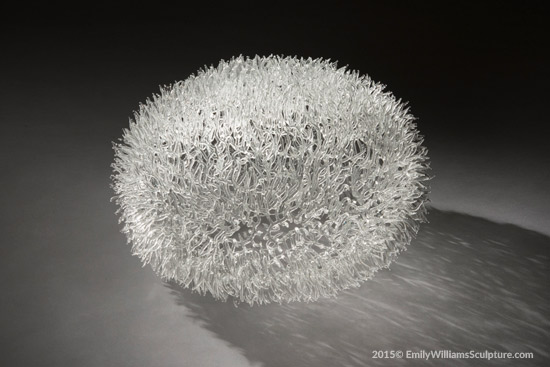
Building a Glass Reef
Recently I completed work on a large glass Brain Coral sculpture. This complex sculpture took a number of months to complete. The Brain Coral is part of a larger glass series looking at different types of reef life. You can view glass sculptures of seaweed, jellyfish, and coral on my website. You may also enjoy reading Sculpting Glass Reef Life.
For three years I have been building my ideas and glass working methods to make these sculptures a reality. At this time I am focused on different coral species such as meandrina and favia brain corals. This new work has swept me into exciting directions exploring coral forms and glass structures.
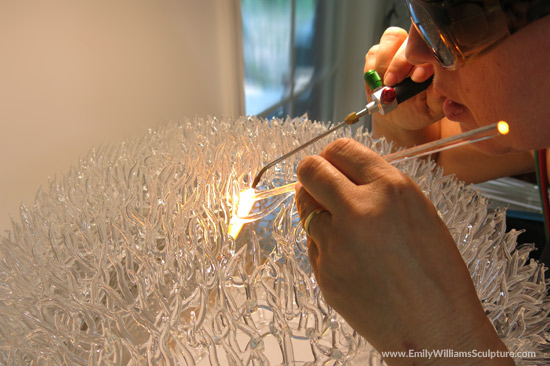
The Feeding Brain Coral
The feeding or “open” brain coral is a spectacular site to behold. Most people think of coral in a “closed” state. When the coral is feeding it releases thousands of swaying tendrils that catch small bits of food in the ocean currents. This state of the feeding brain coral has inspired my recent sculpture Brain Coral. There are many variants of brain coral within a single species. Some feeding corals look like giant balls of spaghetti noodles or bouquets of bright flowers.
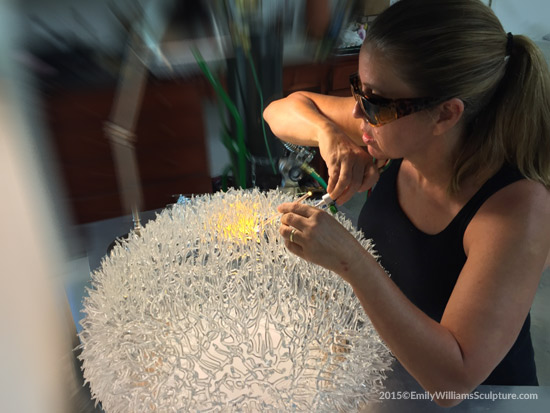
Inspired by Science and Glass History
A coral reef is quite a muse for an artist. There is enough life on a coral reef to keep me busy for a few decades. I study a lot of 18-19th century scientific illustration. I am drawn like a moth to these images made in earlier times when the planet thrived! Many of these drawings are true works of art. There is an abundance of these resources found on the web.
The BHL website features many rare books and scientific drawings. These types of drawings provide me with lots of visual detail about diverse marine life. You may enjoy reading my interview Finding Artistic Inspiration in Biodiversity Literature. In the interview I explain how I access and use these sources to develop my glass sculpture.
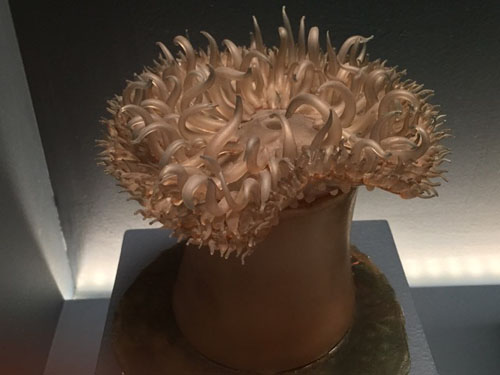
For me the Blaschka glass models are a grand intersection of art and science.
Emily Williams
The Blaschka drawings and glass models have inspired this current series of sculptures. The Blaschka’s were a father and son team from Dresden, Germany. They made very detailed glass models of marine life. They are also known the world over for their glass flower models. For me their glass sculpture is a grand intersection of art and science. Fragile Legacy: The Marine Invertebrate Models of Leopold and Rudolf Blaschka will be on display at the Corning Museum of Glass from May 13, 2016-Jan. 8,2017. For me the Blaschka glass models are a grand intersection of art and science.
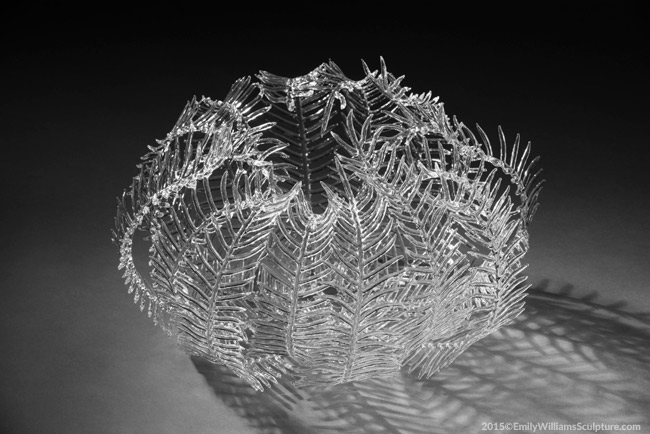
Glass Feather Star, Emily Williams, 2015
Flameworking a Glass Reef with a Hand Torch
Using a glass hand torch makes my sculptures possible. My glass pieces are very complex forms made using “boro” glass. This glass process is sometimes referred to as “flamework.” I use a number of small hand torches with custom tips. These tips allow me to work in ways that would not be possible with a bench torch. The long tips enable me to work deep inside glass sculpture forms. The small tip heads allow access into tight spaces for fusing glass strands. The fuels used with my hand torches are tanked propane and oxygen. These fuels allow for a very hot, clean flame.
You may enjoy watching some of my glass video of coral reef sculptures in the making. On my video page there are clips of me making the feather star and seaweed sculptures. Recently I have had a few artist interviews. You may enjoy reading Meet the Artist Making Glass Coral Reefs on The Creators Project. On my website you will also find many blog posts about my glass reef sculpture.